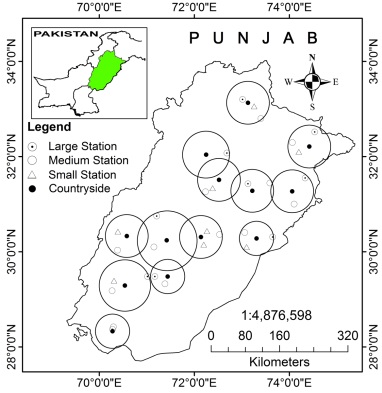Impact of Urbanization on Ambient Air Temperature and Agriculture
Keywords:
Air temperatures, Urbanization, UHI, Punjab, PakistanAbstract
Mean monthly temperature, maximum temperature, and minimum temperature data over the previous 40 years are used to examine the seasonal and annual mean trends and their respective spatial distribution due to urban development in Provincial Punjab, Pakistan. Using population data, 45 weather and climatic stations were divided into three groups, and reference (rural) stations were selected. Several types of urban stations, as well as all stations, have their urban-rural temperature gap, as well as their trend, assessed. It also examines the impact of urbanization on the climate of major cities in Punjab. According to the data, urban warming is strongly correlated with population density. Extreme urban heat island (UHI) effects of 0.67 K annually over major metropolitan station pairs are found, leading to large urban-rural disparities in maximum temperature. Since Pakistan's technological advancement and opening in 2005, the impact of urbanization on air temperature has shifted substantially. Cities in the northeastern part of Punjab showed a greater UHI effect than those in the southern part of the province, indicating that urban areas with strong UHI effects tend to be located in regions with rapid industrial growth.


















